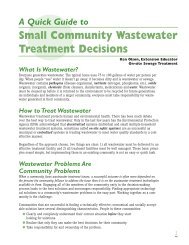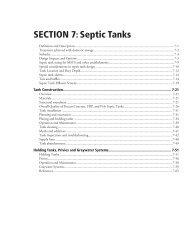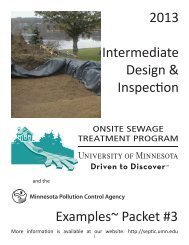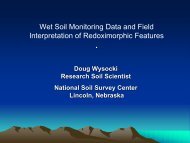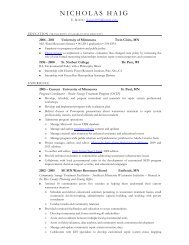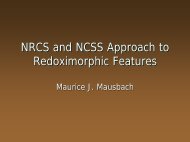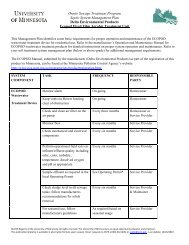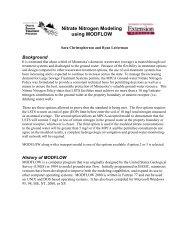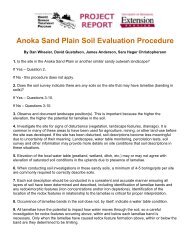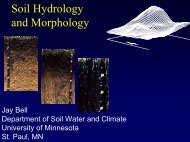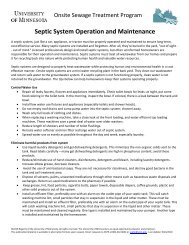Community Assessment Report - Onsite Sewage Treatment ...
Community Assessment Report - Onsite Sewage Treatment ...
Community Assessment Report - Onsite Sewage Treatment ...
Create successful ePaper yourself
Turn your PDF publications into a flip-book with our unique Google optimized e-Paper software.
Mound SystemsMound systems are defined in Chapter 7080.1100, Subp. 50, as “a soil treatment and dispersalsystem designed and installed such that all of the infiltrative surface is installed above grade, using cleansand between the bottom of the infiltrative surface and the original ground elevation, utilizing pressuredistribution and capped with suitable soil material to stabilize the surface and encourage vegetativegrowth.”A sewage treatment mound is nothing more than a seepage bed elevated by clean sand fill toprovide adequate separation between where sewage effluent is applied and a limiting soil layer asshown in the figure below. Mounds were developed in the early 1970s to overcome soil and siteconditions, which limit the use of trenches and beds (Converse et al., 1977). Limiting conditions includehigh water tables, shallow soil depth to bedrock, slowly permeable soil, or soil too coarse for treatment.Figure 1 - Mound System and ComponentsFigure 12.22 Mound SystemA mound system is a two-stage process involving both effluent treatment and dispersal.<strong>Treatment</strong> is accomplished predominately by physical and biochemical processes within the clean sandmaterial and native soil. The physical characteristics of the influent wastewater, influent loading ratetemperature, and the nature of the receiving fill material and in situ soil affect these processes.Physical entrapment, increased retention time, and conversion of pollutants in the effluent areimportant treatment objectives accomplished under unsaturated conditions. Pathogens contained in theeffluent are eventually deactivated through filtering, retention, and adsorption by the fill material. Inaddition, many pollutants are converted to other chemical forms by oxidation processes.The mound system addresses high water table conditions by elevating the infiltration bed toachieve the needed vertical separation. By using uniform distribution and adequate vertical separationin the selected sand media, vertical unsaturated flow is maintained, thus ensuring the maximumtreatment permitted by this technology. On sites with slowly permeable soils, the mound system helpsassure a known level of effluent treatment before effluent is discharged to the native soil. These soilsare subject to severe damage from smearing and compaction, especially during the construction ofconventional systems, which drastically reduces the permeability of the soil by destroying water-moving



